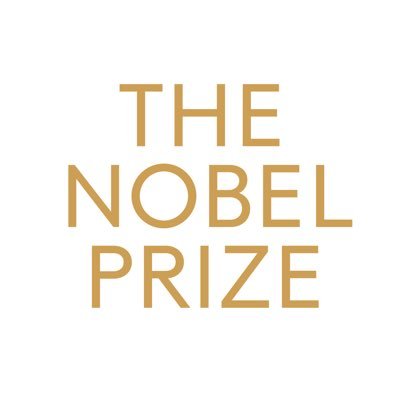
Sergi Valverde🌍(under a blue sky)
@svalver
Followers
3K
Following
43K
Media
950
Statuses
9K
Complex Human. He/him.
Pale blue dot
Joined October 2009
Very excited to share our @Trends_Ecol_Evo review paper on #punctuated_evolution: a pattern of long-term stability interrupted by dramatic changes. A thread on the origins of rapid change, from large #extinctions to socio-technological #disruption.🌍🧬🛠 https://t.co/95Db5TqGPP
10
74
194
Again, the theme of toxicity of environments in shaping macroevolution, gains momentus. This time in the hominid evolution! "...hominids were consistently exposed to lead over 2 Ma, contradicting the idea that lead exposure is solely a modern phenomenon" https://t.co/T1mEW4hAk2
0
7
23
New online! The functional adaptations of mammalian brain structures through a behavioural ecology lens https://t.co/lAprxEZ8SX
0
43
132
📌Save the Date! The flagship conference of the Network Science Society - 𝗡𝗲𝘁𝗦𝗰𝗶 𝟮𝟬𝟮𝟲 - is coming to Northeastern University’s Network Science Institute, 𝗝𝘂𝗻𝗲 𝟭-𝟱, 𝟮𝟬𝟮𝟲. Registration opens soon! 🔗 https://t.co/LH8ikP4bTj
0
17
28
A PhD position within the @spp2389 is available in my lab to work on: Emergence and self-organisation of bacterial metabolism in consortia of cross-feeding bacteria. Please RT Deadline: 12.11.25 More infos 👇 https://t.co/faB0tobyMp
0
81
149
Most cited article in @Journal_EHS: Animal cultures: how we've only seen the tip of the iceberg - https://t.co/nHfsLrCD4v By Caroline Schuppli & Carel P. van Schaik #culture #sociallearning #orangutans
0
1
3
The Aghion et al paper on the inverted U-curve between competition and innovation has never really convinced me. Where’s the curve? Look at this scatter plot — is this a U to you? Like the theory is intuitive and plausible, it just isn’t in your data.
27
43
295
I found the answer at: The peer-review crisis: how to fix an overloaded system. But it's behind a paywall! I wonder if the corporate publishing model is really the best fit to science. https://t.co/12r8F8kp0c
Equally, authors expecting fast reviews of their manuscript when they have ignored every review request for the last 2 years...
1
1
3
Earlier this year, the President’s budget proposed a 40% cut to the NIH budget. This sparked an obvious research question: What if the NIH had been 40% smaller in previous years? Here’s what Pierre Azoulay, Danielle Li, Bhaven Sampat, and I found when we looked at grants that
12
132
435
Once again the Econ Nobel is announced just in time for the week in @devikadutt & my module where we study the dev of capitalism. And once again it confirms to students that prevailing understandings of growth in Econ are thoroughly Eurocentric (esp Mokyr in most blatant way)!
12
34
202
I'm Roger Koppl and I approve this message.
It is easier to fit straight lines to a truncated time series. A theory of the adjacent possible can explain the entire 500,000 years of technological evolution since the emergence of composite tools, which suggests apparent stagnation. @Roger_Koppl 👉 https://t.co/k8jjJlxPko
0
1
4
We have compiled a large collection of empirical and theoretical information about our history, drawing from diverse perspectives, covering many temporal and spatial dimensions. Prizes can cellebrate more than partial views of technological and cultural evolution.
0
0
1
By focusing on specific countries and historical periods, we crucially lose sight of the broader cultural evolution of our species. In “The Medieval Machine,” Gimpel redefines the Middle Ages as a period of technological innovation, challenging the common view of it as stagnant.
1
0
0
I found it intriguing that the chosen “stagnation period” includes the printing press (a significant innovation in disseminating ideas) and medieval watermills. These were crucial in the development of capitalism, laying the groundwork for a mechanized and profit-driven economy.
1
0
0
It is easier to fit straight lines to a truncated time series. A theory of the adjacent possible can explain the entire 500,000 years of technological evolution since the emergence of composite tools, which suggests apparent stagnation. @Roger_Koppl 👉 https://t.co/k8jjJlxPko
However, this was not always the case. Quite the opposite – stagnation was the norm throughout most of human history. Despite important discoveries now and again, which sometimes led to improved living conditions and higher incomes, growth always eventually levelled off.
1
1
4
the two Nobels - economics and peace - are pure liberal nostalgia for a world where the US was a reliable hegemon and neoliberalism was an economic consensus
BREAKING NEWS The Royal Swedish Academy of Sciences has decided to award the 2025 Sveriges Riksbank Prize in Economic Sciences in Memory of Alfred Nobel to Joel Mokyr, Philippe Aghion and Peter Howitt “for having explained innovation-driven economic growth” with one half to Mokyr
27
242
1K
Technology, in today’s world, seems to prioritize the consumption of unnecessary obsolescence over adaptation and long-term survival. The meaning of innovation clearly differs in these two contexts. @niles_eldredge @t_shumon
The 2025 laureates in economic sciences Philippe Aghion and Peter Howitt studied the mechanisms behind sustained growth. In an article from 1992, they constructed a mathematical model for what is called creative destruction: when a new and better product enters the market, the
0
1
6
Sounds like one more case of complexity science, resonating with the Darwinian mechanisms of clade heclade displacement, "the double wedge", Red Queen and so on. CC: @svalver @BlaiVidiella @niles_eldredge
The 2025 laureates in economic sciences Philippe Aghion and Peter Howitt studied the mechanisms behind sustained growth. In an article from 1992, they constructed a mathematical model for what is called creative destruction: when a new and better product enters the market, the
0
1
7
Cool to discover, that new living fossils. One example is Hula painted frog https://t.co/SuVcOzsRRd , which is endemic to one lake in Israel and it diverge from sister in the Paleogene Apparently new (extinct) species is found in early Pleistocene of Italy https://t.co/y8re25n6Dv
0
16
61
Reading tip for us all in these demented times: Don Norman's "Things that make us smart." Published in 1994. Now more important than ever. https://t.co/54QBgG76DJ Technology should make *us* smarter, not dumber. This is a question of good design. And we have to stay in control.
goodreads.com
Discover and share books you love on Goodreads.
0
1
1
Dinosaurs vanished; humanity reached the stars. Both Clarke and the fossil record remind us that intelligence is only one experiment in evolution. The universe keeps evolving, with or without us. @AndrejSpiridon4 @niles_eldredge @PalaeoPhilo
0
1
9















